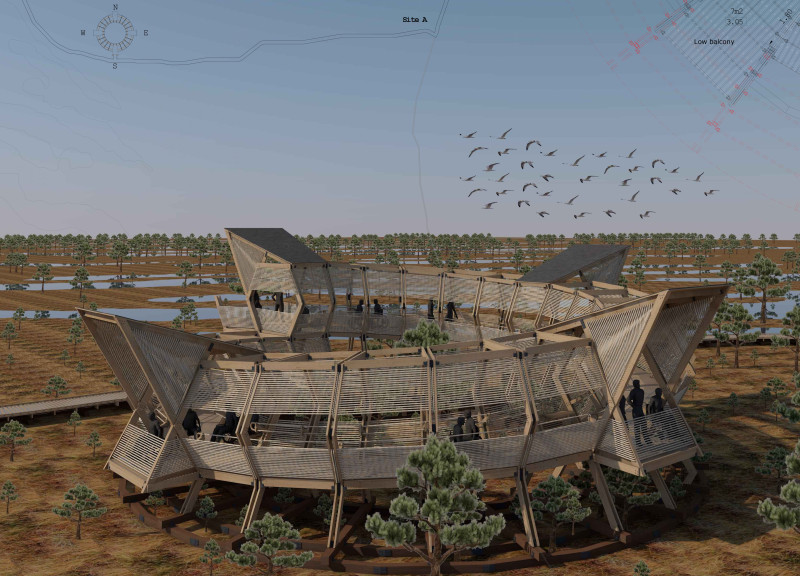5 key facts about this project
### Overview
Located within Kenner Natural Park, the Nest Tower is designed to facilitate observation and engagement with the surrounding ecosystem while maintaining ecological integrity. The structure embodies principles of human interaction with nature, serving as both an observation point and a conceptual representation of a bird's nest, thus reflecting its role within the natural system.
### Structural and Material Strategy
The Nest Tower is primarily constructed using prefabricated pine wood sourced locally, emphasizing sustainability and minimizing environmental impact. The design features a hexagonal and spiral configuration composed of modular components, which allows for spatial fluidity and adaptability for future expansion. Elevated platforms are strategically oriented toward cardinal points to optimize visual connections with the landscape. Material selection includes burnt wood, employing traditional Japanese techniques for durability, along with recycled wood from existing boardwalks, further enhancing sustainability efforts. Steel components are incorporated for structural stability without overpowering the natural materials used.
### User-Centric Accessibility
The design integrates gentle ramps and multiple access points to ensure inclusivity for all visitors, including those with mobility challenges. Open spaces promote natural ventilation and foster a strong connection to the surrounding environment. Balconies at varying heights provide unique vantage points that enhance the user experience, allowing for contemplation and engagement with nature. The circular foundation and site placement are carefully selected to harmonize with the park's topography, ensuring minimal disruption to existing ecosystems and enhancing the overall visitor experience through thoughtful landscape integration.






















